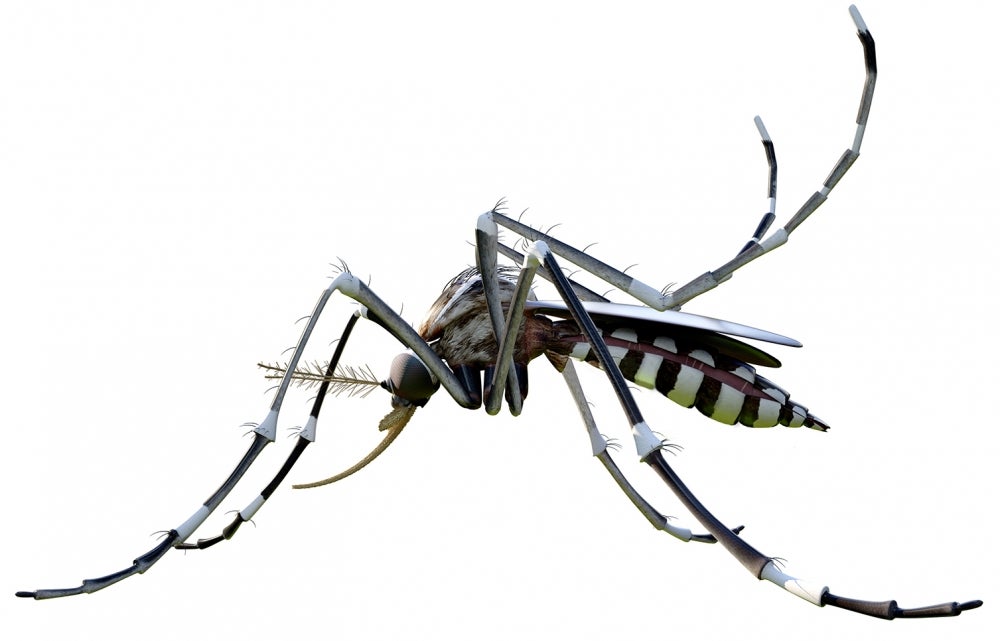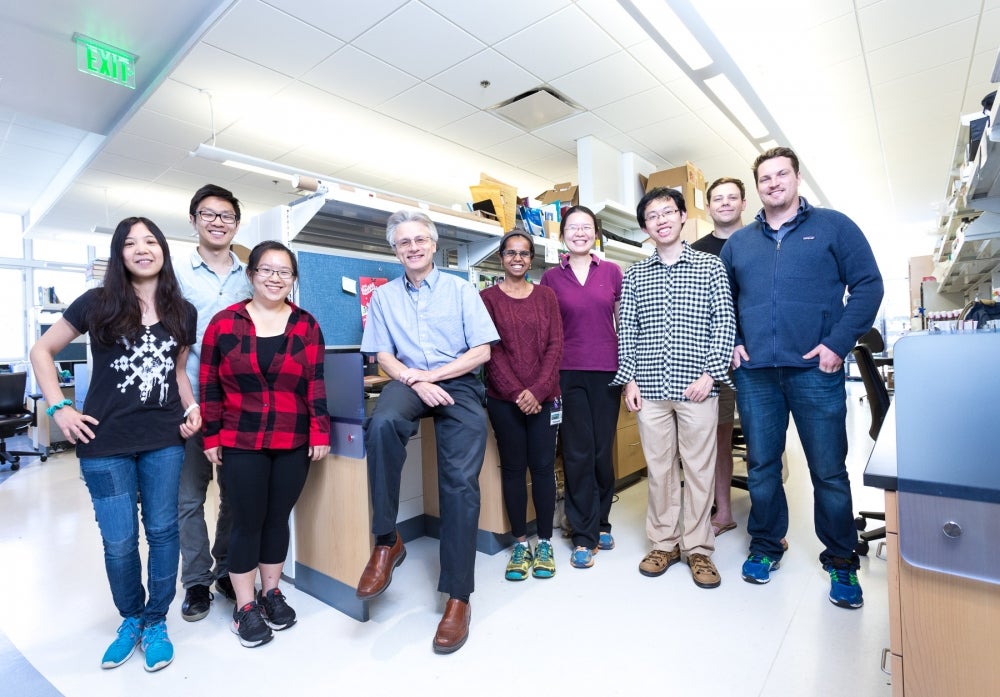
Small Pest, Big Battle

The Aedes aegypti mosquito may be tiny but it can wreak major havoc on human health, spreading diseases such as Zika, dengue fever and yellow fever.
Those little suckers are about to face the fight of their life.
The Defense Advanced Research Projects Agency (DARPA) of the U.S. Department of Defense has awarded up to $14.9 million to a team of researchers from six University of California campuses, including biologist Craig Montell at UC Santa Barbara, to study how to use gene editing as a way to control disease-spreading mosquitoes.
Insects that carry disease represent one of the greatest worldwide threats to human health, with billions of people currently at risk of infection. Last year, more than 700 million people were infected with malaria or dengue fever, resulting in 440,000 deaths. And the prevalence of Zika virus is rising.
“Protecting the public from these diseases is difficult,” said Montell, the Patricia and Robert Duggan Professor of Neuroscience in the Department of Molecular, Cellular, and Developmental Biology, whose lab works with Aedes aegypti. “Vaccines to prevent the diseases either don’t exist or are not very effective, and current mosquito control methods are inadequate. Therefore, there is a critical need for a transformative, species-specific, safe and effective method to control mosquitoes.”
Called Safe Genes, the DARPA project will focus on a technique pioneered by two team members, Ethan Bier of UC San Diego and Anthony James of UC Irvine. Known as gene drive, it can spread desirable genes in wild populations or suppress harmful organisms. Gene drive has been discussed and studied for decades, but the recent discovery of the CRISPR/Cas9 gene editing technique has revolutionized the development of gene drive systems, offering an increasingly inexpensive, efficient and more reliable way to make precise, targeted changes to the genome.
Advances in genetics and molecular biology will allow the UC researchers to understand the potential risks and benefits of using the technique to introduce genetic elements into laboratory mosquito populations to enforce the continued inheritance of selected genes. These elements function by biasing their transmission frequencies at rates significantly greater than the normal 50 percent, resulting in rapid spread throughout a population.
With the DARPA contract, the scientists aim to develop and test several approaches and integrate novel effectors to the gene drives. Effectors are elements that increase utility and safety and enable complex mathematical modeling to identify the most effective approaches. This effort seeks to answer many of the unknowns that still surround this novel approach for consideration by scientists, policymakers and the public.
UCSB’s contribution to the four-year project focuses in part on callback measures, which ensure that transgenic mosquitoes extinguish themselves. “Our approach is to suppress the population of Aedes aegypti,” Montell explained. “Although we will not release transgenic animals within the scope of this contract, our design nevertheless includes safeguards to make sure that the animals are not capable of persisting in the environment.”
The team will also integrate ecological data by sampling and sequencing wild mosquitoes captured from locations throughout California. This knowledge will help inform the designs of the drives and help predict how they might behave in a natural setting.
While the initial research will focus on Aedes aegypti, the technologies the UC team develops are meant to be general enough that they can be applied later to different mosquito species that spread other diseases, such as malaria and West Nile virus.
“Our primary goal is to safely test and innovate these technologies strictly in the laboratory,” said Safe Genes team leader Omar Akbari, an assistant professor at UC Riverside. “We hope our efforts will broaden our fundamental understanding of the potency of gene drives to help better understand how they may behave in the natural environment if ever released.”
Other team members are Valentino Gantz, Sergey Kryazhimskiy, Justin Meyer and Cinnamon Bloss at UC San Diego; Gregory Lanzaro at UC Davis; and John Marshall at UC Berkeley.



